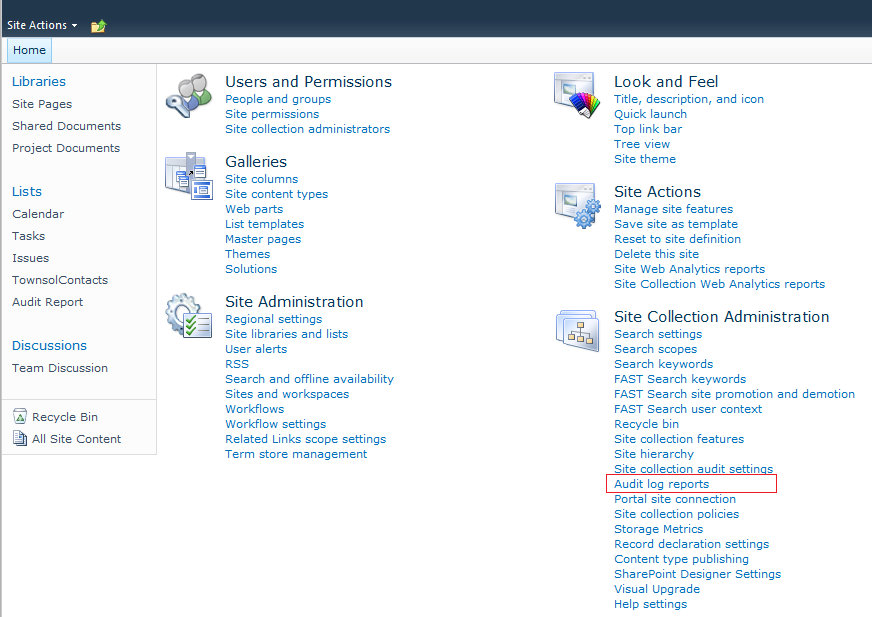Below are some of the steps provided for configuring OOB auditing feature in SharePoint 2010
First of all open the site from the browser and click on site actions menu. From the site action menu select the site settings option
After clicking in the site settings option SP will redirect you to the settings page.Select the site collection audit settings option from there.
Now SP will show you audit setting page where you can select various level of auditing. Select the required auditing level, set the report path list and click on OK
Now auditing feature is enabled on your site. All the viewing editing and all other tacking will be done by this feature and maintained in allocated list.
You can view audit report by clicking on the audit report option from site settings page
And here is your report. Click on the link to open it in excel
Its done..! Very simple.!
Wednesday, May 29, 2013
Wednesday, May 15, 2013
Accessing share point data on fly in share point App
In some scenarios share point app can request permission to
access SharePoint data dynamically during run time. This type of app does not
have to originate from SharePoint 2013. It could be an app that is launched
from any website and that wants to access data on SharePoint 2013 on the fly.
To be able to get into SharePoint, this type of app must
first be registered through the Seller Dashboard or the appregnew.aspx page..
After you've
registered your app, it has an app identity and is associated with a security
principal, referred to as an app principal. Like users and groups, an
app principal has certain permissions and rights.
After registering the app you'll get a client id, client
secret, app domain, and redirect URI associated with that particular app
principal. This app information identifies that particular app principal. This
app information is registered with the authorization server, Windows Azure
Access Control Service (ACS).
In SharePoint 2013, the OAuth authentication and
authorization flow for an app that requests permissions to access SharePoint
resources on the fly involves a series of interactions between your app,
SharePoint 2013, the authorization server (which is ACS), and the end user at
run time.
For an app that requests permissions to access SharePoint
data, you have a server that is separate from SharePoint 2013, and not part of
the SharePoint farm. You, the app developer, own this server (let's call it the
Development.com server). You write the code for your app and deploy the app to
the Development.com server.
The Development.com server uses the SharePoint client object
model (CSOM) or REST endpoints with CSOM to make calls to SharePoint 2013. The
Development.com app uses OAuth to authenticate with SharePoint 2013. The ACS is
where SharePoint requests an authorization code that it can send to the
Development.com server. Later, the Development.com server uses the
authorization code to request an access token from the ACS as part of the OAuth
transaction process. The Development.com server then uses the access token to
talk back to SharePoint.
Subscribe to:
Comments (Atom)




